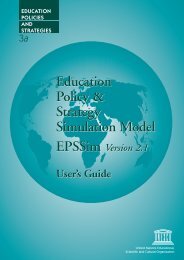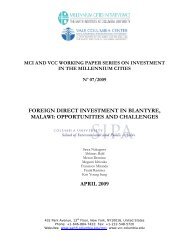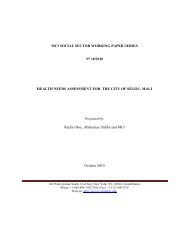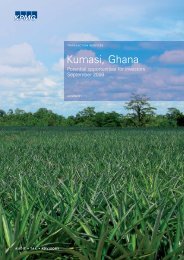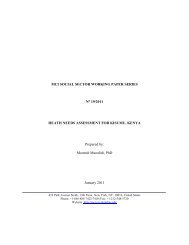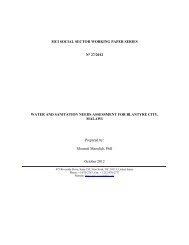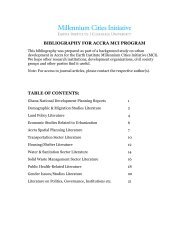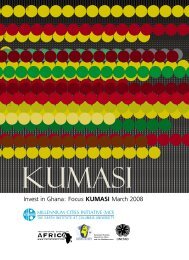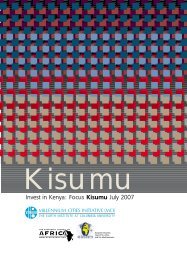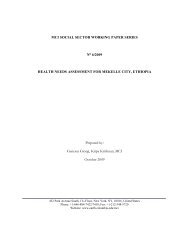Transport-Land Use Research Study - Millennium Cities Initiative ...
Transport-Land Use Research Study - Millennium Cities Initiative ...
Transport-Land Use Research Study - Millennium Cities Initiative ...
You also want an ePaper? Increase the reach of your titles
YUMPU automatically turns print PDFs into web optimized ePapers that Google loves.
Introduction<br />
The Accra Pilot BRT: <strong>Transport</strong>-<strong>Land</strong> <strong>Use</strong> <strong>Research</strong> <strong>Study</strong><br />
<strong>Millennium</strong> <strong>Cities</strong> <strong>Initiative</strong> and Accra Metropolitan Assembly<br />
This study focuses on the development of the Accra pilot BRT and its potential impact on wider<br />
transportation and land use planning. The pilot BRT is one of five pillars of a national urban transportation<br />
development project that aims to improve mass transport services within the Greater Accra Metropolitan<br />
Area (GAMA) through the development of an efficient and affordable bus transit system.<br />
The City of Accra, Ghana‟s capital and by far its largest city, is the country‟s commercial and political<br />
centre. The city has an estimated residential population of 2.1 million people (2009 figure), but with an<br />
average annual growth rate of 4.4%, the city‟s population is expected to reach 2.6 million by 2015 and 4.18<br />
million by the year 2025. Each day, an additional half a million commuters travel into the city to undertake<br />
professional, administrative, educational, commercial and industrial activity (World Bank, 2010).<br />
Background<br />
It is said that the lack of a good road system causes a country‟s “wheels of development [to be] mired in<br />
mud” (Ellison, 2002). Given Accra‟s current economic and political status and future growth potential, an<br />
effective multi-modal transportation system, which includes both motorised and non-motorised forms of<br />
transport, is essential to supporting continued accessibility and mobility, as well as economic development.<br />
British colonial policy laid out the transport framework throughout present-day Ghana and the city of Accra<br />
(Songsore, 2003). In the coastal cities of British territories, transport investment prioritized development at<br />
industrial and port areas. Typically, the road network consisted of a major trunk road from the central<br />
business district (CBD), leading out of the city to the provinces, spurring development in the industrial<br />
and/or port area (Banjo and Dimitriou, 1983). Economic development thus led to the concentric and<br />
centripetal road network structure of Ghanaian cities, with a concentration of high-density activity at the hub,<br />
but limited road space. This road network structure is illustrated in and around Accra, where a series of radial<br />
routes converge at the city‟s CBD: A major deficiency is the lack of east-west corridors (Addo, 2002;<br />
Tamakloe, 1993).<br />
Accra‟s urban growth has shifted away from what is known as “compact city growth” -- characterized by<br />
high population densities with mixed land use and highly concentrated residential patterns, such as in the<br />
area of Jamestown, where population density can approach as much as 1,000 persons/hectare -- to a “network<br />
city” development pattern, characterized by the decentralization of land use, with lower population densities<br />
and suburban residential development (Selase, 2004). When planned effectively, compact city growth can<br />
maximize land use with a concentrated mix of work, living places and infill development. Such planning can<br />
- 8 -





